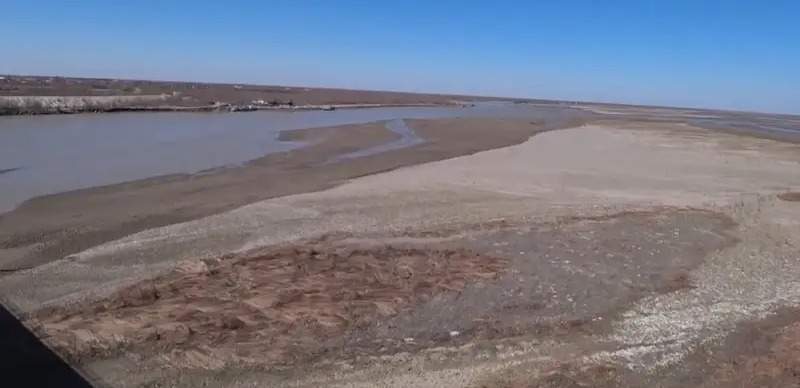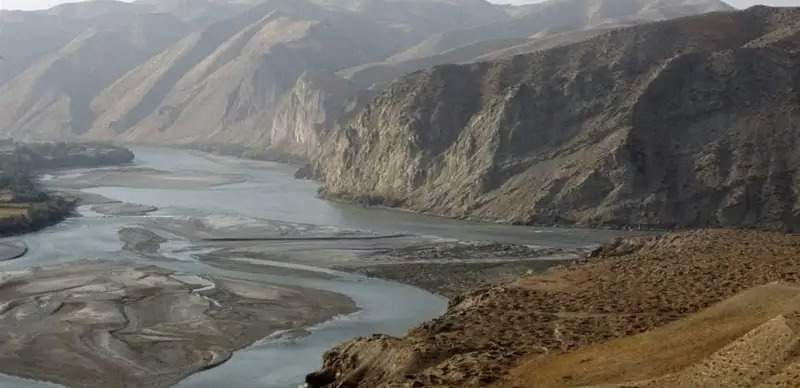What Afghanistan's Qosh Tepa Canal could mean for Central Asia

Water issues are becoming increasingly acute for the countries of Central Asia. The giant Qosh Tepa Canal is being built at an accelerated pace on the Amu Darya River in northern Afghanistan. Experts believe this will dramatically worsen water shortages in downstream countries. In this piece, Kazinform News Agency explores what risks and challenges the Afghan megaproject poses for Central Asia, and whether it is possible to find a mutually beneficial solution to this issue to avoid catastrophic consequences.
The history of the Afghan “construction of the century”
The Amu Darya is the deepest river in Central Asia. It originates in the glaciers of the Pamir Mountains and flows through the territory of Tajikistan, Afghanistan, Turkmenistan and Uzbekistan. 80% of the flow of the Amu Darya is formed in the territory of Tajikistan and partly in northern Afghanistan.
The idea of irrigating desert areas in northern Afghanistan with the waters of the Amu Darya appeared more than 50 years ago under the first president of the country, Mohammad Daoud Khan. However, these plans were thwarted by the 1979 revolution and the civil war that followed. Consideration of the project, with the participation of the United States Agency for International Development (USAID), was resumed in 2018 under Ashraf Ghani.
Construction of the Qosh Tepa Canal began in Afghanistan in March 2022, costing $684 million. It is scheduled for completion in 2028. The canal will be 285 kilometers long, 100 meters wide, and 8.5 meters deep. According to the Taliban administration, it will be built in two stages without outside technical and financial support.
In October 2023, construction of the first section of the canal was completed, and the second phase of the project began. According to Afghan media, the length of the first section of the canal is 108 kilometers. It originates from the Amu Darya River and reaches the Daulatabad region of Balkh province. Its construction lasted 1.5 years. In the second stage, it is planned to build a 177-kilometer-long section of the canal and pass through the provinces of Jowzjan and Faryab.

The Afghan government has high hopes for the ambitious project, which is intended to irrigate more than 500,000 hectares of land in the north of the country. This should alleviate the country’s catastrophic food situation.
Impact of the canal under construction on Central Asian countries
Central Asia is a region where water security is inextricably linked to energy, food and the environment. Water is one of the main factors in the socio-economic development of the Central Asian states, where water consumption doubles every decade.
In an interview with Kazinform, Ravshan Nazarov, a Uzbek expert and senior researcher at the Institute of State and Law of the Academy of Sciences of Uzbekistan, noted that most of the Central Asian region is in the arid zone. Therefore, the launch of the Qosh Tepa Canal will sharply worsen water shortages in many areas of the region.
Qosh Tepa is being built to abstract water from the Amu Darya at 10 cubic kilometers per year, which, with an average long-term river flow of 70 cubic kilometers, will become very sensitive for downstream countries. And this is even though, in recent years, all the countries of Central Asia are increasingly experiencing water shortages. Uzbekistan and Turkmenistan will suffer the most, losing up to 15% of irrigation water from the region's main river.
The consequences will be especially disastrous during periods of low water, which have occurred more and more often in recent decades. For the fourth spring in a row, the lower reaches of the Amu Darya are shallow. According to the hydrometeorological service of Uzbekistan, in May 2023, river flow amounted to only 60% of water volumes in the same period of 2019–2022.

“Today, the Amu Darya is not nearly as full of water as it was when the agreement was concluded between the USSR and Afghanistan. Therefore, the construction of the canal will add very big problems to the entire region, but especially, of course, to Uzbekistan and Turkmenistan. It is expected that this year, the water resources of the Amu Darya will decrease by 10–15%. A saying among the peoples of our region is ‘the land ends where the water ends,’” said Ravshan Nazarov.
Specialists are seriously concerned about the canal construction technology, or rather, the lack thereof. The banks and bed of the canal are not concreted or compacted for economic reasons. Loose and sometimes sandy soil leads to significant water loss. As a result, Afghanistan's water intake will amount to 30% of the total flow of the Amu Darya. The Karakum Canal was built in a similar way in Turkmenistan, which ultimately led to the drying up of the Aral Sea.
“Most of the water is lost in the region's dry, sandy soil. Besides, digging a canal is the easiest part of its construction. The Taliban are unlikely to be able to manage complex engineering work on the construction of irrigation systems,” notes Afghan engineer Najibullah Sadid, now living in Germany.
In turn, experts note that the problems of the Amu Darya will affect the second water artery of the region - the Syr Darya.
“In fact, this is a problem for the entire region. If there is less water in the Amudarya, water intake from the Syrdarya will increase. Central Asia is a single water basin, we live in the same house, in the same ecosystem. And local violations will lead to problems throughout the region. There will be a water shortage - this is our main problem! Associated conflicts are food shortages, hunger, migration, and disease,” noted Bulat Yessekin, a Kazakh expert in the field of environmental policy.
According to most experts, the growing problem of water shortage in Central Asia will become threatening in the next 20–30 years, which is fraught with the collapse of local economies, the emergence of millions of new migrants, and even armed conflicts.
The lack of a legal framework exacerbates the problem
Afghanistan has the right to use the waters of the Amu Darya, but at the moment, the country does not have any agreements or treaties on water resources, and Qosh Tepa is being built without taking into account the position of its neighbors in the region.

The 1946 agreement between the Soviet Union and the Afghan government became invalid and generally did not provide for specific volumes of Amu Darya water for the country.
Water relations in Central Asia are regulated by the Almaty Agreement, signed in 1992 by Kazakhstan, the Kyrgyz Republic, Tajikistan, Turkmenistan and Uzbekistan.
The Interstate Commission of Coordination plays a key role in water resources management, developing and approving a long-term water supply program. Water use in the region is also regulated by the 1992 UN Convention on the Protection and Use of Transboundary Watercourses and International Lakes. Afghanistan has not joined any of the above-mentioned agreements on the use of water resources in Central Asia, but this did not stop the Taliban from starting the construction of Qosh Tepa.
“Those who express their concerns should do so on the basis of an agreement, but Afghanistan does not have any agreements with anyone here related to water, and we have never had any agreements or treaties in this area,” said the acting Minister of Energy and Water of Afghanistan Abdul Latif Mansur.
Since the Taliban is an unrecognized government, it is impossible to accept it and reach an agreement with the Interstate Commission for Water Coordination of Central Asia.
No one can deny Afghanistan's right to use the Amu Darya. Still, its non-participation in global and regional agreements does not secure any rights or impose obligations on the use of water. This could cause tension in the region.

What's next?
To further regulate the water issue in the region, the countries of Central Asia need to connect Afghanistan to dialogue platforms with the possibility of inclusion in the future in relevant international and regional treaties and organizations. A multilateral meeting with the participation of Afghanistan and Central Asian countries would be a big step towards mutual understanding. The possibility of signing bilateral agreements between Afghanistan and Uzbekistan and Turkmenistan is not excluded.
The first initiatives in this direction were announced during a meeting of the Council of Heads of Founding States of the International Fund for Saving the Aral Sea in September 2023 in Dushanbe.
“We consider it necessary to form a joint working group to study all aspects related to the construction of the Qosh Tepa canal and its impact on the water regime of the Amu Darya, with the involvement of research institutes of our countries. We propose to consider the issue of involving representatives of Afghanistan in a regional dialogue on the joint use of water resources,” President of Uzbekistan Shavkat Mirziyoyev said back then.
According to Anatoly Sorokin, the head of the regional information and analytical department of the Interstate Commission for Water Coordination (ICWC), at the first stage, the Afghan Ministry of Agriculture should be involved as an observer in the ICWC's work.
“It is necessary to involve Afghanistan in the work of the ICWC, initially as an observer, thereby transferring to it part of the responsibility for the future of the basin and the Aral Sea,” the expert emphasized.
Although the Taliban have repeatedly emphasized their readiness to resolve the dispute over the Qosh Tepa Canal through diplomatic methods, so far, there are no signs of a multilateral dialogue. In the absence of mutual dialogue, the current situation could further isolate the Taliban and aggravate the regional security problem.
